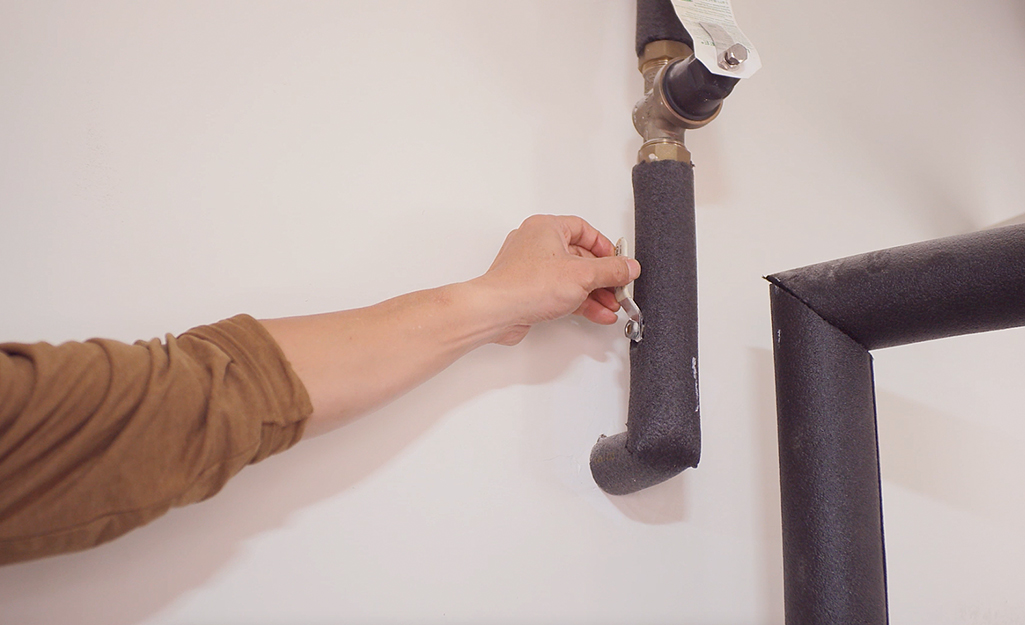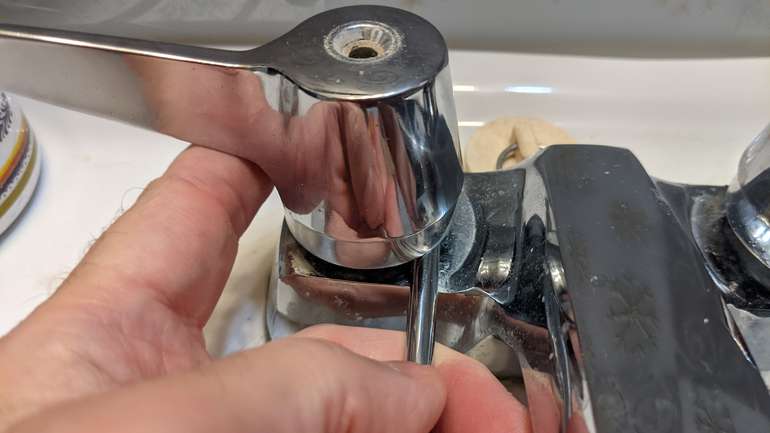The Advantages of Dealing with a Malfunctioning Faucet
The Advantages of Dealing with a Malfunctioning Faucet
Blog Article
This article directly below relating to What Causes Leaky Faucets & How To Fix Them is amazingly motivating. Read on and draw your own personal ideas.

Leaking faucets could look like a small hassle, but their effect surpasses just the nuisance of the sound. From wasting water to sustaining unneeded economic prices and health risks, ignoring a dripping faucet can result in numerous consequences. In this short article, we'll explore why it's critical to resolve this common family concern without delay and properly.
Wastefulness of Water
Ecological Influence
Dripping taps add substantially to water waste. According to the Environmental Protection Agency (EPA), a single tap leaking at one drip per second can squander more than 3,000 gallons of water per year. This not just strains water resources but additionally influences ecological communities and wildlife based on them.
Financial Prices
Raised Water Expenses
Beyond the environmental influence, dripping taps can blow up water costs considerably. The collected wastefulness with time converts right into greater utility expenses, which could have been prevented with timely repair work.
Potential Residential Property Damages
Furthermore, prolonged trickling can cause damage to components and surfaces surrounding the tap. Water buildup can trigger discoloration, rust, and also architectural issues if left ignored, resulting in extra repair prices.
Health Worries
Mold and Mold Growth
The continuous visibility of moisture from a leaking tap creates a suitable environment for mold and mildew development. These fungis not only jeopardize interior air top quality but likewise present wellness threats, specifically for people with respiratory conditions or allergies.
Waterborne Illness
Stagnant water in leaking faucets can end up being a breeding ground for germs and other virus, increasing the danger of waterborne illness. Impurities such as Legionella microorganisms thrive in stagnant water, potentially resulting in major health problems when consumed or breathed in.
Do it yourself vs. Expert Repair work
Benefits and drawbacks of Do It Yourself Repair Work
While some may attempt to deal with a trickling tap themselves, DIY repairs feature their own collection of obstacles. Without correct expertise and devices, do it yourself attempts can aggravate the issue or lead to insufficient repair services, extending the problem.
Advantages of Hiring a Specialist Plumber
Hiring a specialist plumber guarantees that the underlying root cause of the trickling faucet is resolved efficiently. Plumbers possess the expertise and devices to detect and fix faucet issues effectively, conserving time and minimizing the danger of more damages.
Step-by-Step Overview to Fixing a Dripping Faucet
Tools Needed
Before attempting to take care of a leaking tap, collect the needed tools, consisting of a flexible wrench, screwdrivers, substitute components (such as washing machines or cartridges), and plumber's tape.
Typical Faucet Issues and Their Solutions
Identify the type of tap and the details problem triggering the drip. Common problems consist of damaged washing machines, corroded valve seats, or damaged O-rings. Describe producer instructions or on-line tutorials for step-by-step guidance on repair services.
Preventive Measures
Normal Maintenance Tips
To prevent leaking taps, perform regular maintenance such as cleaning up aerators, inspecting for leaks, and changing worn-out components immediately. Additionally, think about mounting water-saving devices or upgrading to much more effective components.
Significance of Prompt Fixes
Addressing dripping faucets as quickly as they're seen prevents further water waste and prospective damages, eventually saving both water and money in the future.
Effect On Property Worth
Assumption of Well-Maintained Home
Keeping a property in good condition, consisting of dealing with upkeep problems like dripping taps, improves its perceived value and value amongst possible purchasers or renters.
Influence on Resale Worth
Qualities with well-kept plumbing fixtures, consisting of faucets, command greater resale values in the property market. Resolving leaking taps can contribute to a favorable perception throughout residential property evaluations and arrangements.
Environmental Obligation
Specific Contribution to Preservation
Taking responsibility for taking care of trickling faucets lines up with wider initiatives towards water conservation and environmental sustainability. Every individual's activities jointly make a substantial effect on protecting priceless sources.
Lasting Living Practices
By focusing on punctual fixings and adopting water-saving habits, individuals contribute to lasting living techniques that profit both existing and future generations.
Final thought
Resolving a trickling tap exceeds simple benefit; it's an important step towards saving water, decreasing financial prices, and securing health and home. Whether through do it yourself repair work or expert aid, acting to take care of dripping faucets is a little yet impactful means to promote responsible stewardship of resources and add to a much healthier, more lasting future.
How to Fix a Dripping or Leaky Faucet
A leaking faucet is one of the most common problems that homeowners encounter, but it being commonplace doesn’t make it any less annoying. The constant drip drip drip of a leaking bathtub faucet, showerhead, or sink tap can disturb your home’s serenity. Left neglected, a dripping faucet can also result in higher water bills and discoloration or mold growth in your sink or plumbing fixtures.
Fortunately, you don’t have to be a trained plumber to know how to stop a dripping faucet. With some basic tools, replacement parts, and a little patience, leaky faucet repair is a breeze. In this article, we’ll explain what causes dripping faucets and how you can fix them.
What Causes a Leaking Faucet?
Kitchen and bathroom faucets come in all manner of designs, but most involve some combination of valves, O-rings, seals, and washers. The O-ring is usually the weakest link, but any one of these pieces can wear down over time. Heat, moisture, temperature fluctuations, minerals, mold, and movement can contribute to warping and corrosion, breaking the watertight seal. This just comes with the territory of being a homeowner. Everything is always subject to wear and tear, and some component parts of your appliances and fixtures need to be replaced on occasion. At least replacement O-rings are cheap!
More rarely, dripping faucets can be a symptom of excessively high water pressure. Were this the case in your home, you would probably notice that the leak is not isolated to one faucet. Water pressure issues are harder to resolve on your own. We recommend contacting a professional plumber if you suspect your water pressure is too high.
How to Fix a Dripping Faucet
Pipe wrench or monkey wrench Allen wrench set Screwdrivers Old towel or rag Shut off the water.
Before you do anything, you need to turn off the water to keep from drenching your kitchen or bathroom. You should find a valve under the sink and against the wall. Once you’ve turned this valve, try turning the faucet on to confirm that the water source has been cut off.
If you can’t locate your local valve for the faucet you’re working on, you can always shut off the water to the house at the main valve. Of course, this will prohibit anyone from using the sinks, showers, or toilets while you’re working on the faucet that’s giving you trouble.
Plug or block the drain.
You’ll be disassembling the faucet and removing some small bits of hardware. Plug the drain with a stopper or rag to avoid the possibility of a small screw falling into your P-trap.
Take apart the faucet assembly.
There are several varieties of kitchen and bathroom faucets, each with its own manner of assembly. For detailed instructions on how to disassemble your faucet, you can refer to the fixture’s manual or contact the manufacturer. If you know whether you have a ball, disc, cartridge, or compression faucet, you can find detailed schematics online.
In general, you need to begin by removing the faucet handles. You might notice a small screw that you’ll need to remove with a screwdriver or Allen wrench. If you don’t see any visible securing hardware, it’s likely hidden under a decorative cap that can be unscrewed or popped off with flathead screwdriver.
Remove each piece methodically, consulting a schematic when necessary. Take notes or arrange the pieces in such a way to make it easier to correctly reassemble the faucet later.
Remove the cartridge.
Once you’ve removed the handles and securing hardware, you should be able to remove the valve cartridge or stem. Some cartridges will slide right out. Other faucet models will require you to loosen a nut with a pipe wrench before you can remove the valve stem.
Examine the exposed hardware.
With the cartridge or stem removed, inspect the component parts. Check the rubber O-rings for wear and tear. Also examine the seat washer for corrosion or other damage. These pieces are usually the responsible parties for a dripping faucet, but it’s worth inspecting the other component parts while you have the faucet disassembled.
Find replacement parts.
Once you’ve identified which faucet component has failed, find an identical replacement. Your local hardware store should have O-rings, seat washers, and other standard components in stock. If you have a luxury or uncommon faucet, you may have to contact the manufacturer for a replacement part.
It’s a good idea to take your old parts with you to the hardware store so you can compare them with the store’s inventory and be sure you’re purchasing the correct replacement.
Reassemble the faucet.
With your new parts in hand, reconstruct the faucet and handles. Don’t be tempted to overtighten screws or nuts. You might think this could create a better seal, but it can instead damage or bend a delicate part of the assembly and create a new problem for you.
Turn on the water and test the faucet.
The only thing left to do is test your work. Unplug the sink, turn the water back on, and try the faucet. Congratulate yourself on a job well done!
https://www.libertyhomeguard.com/how-to-fix-a-dripping-or-leaky-faucet/

Do you appreciate reading up on Should I Repair or Replace a Leaky Faucet?? Place feedback further down. We would be delighted to find out your suggestions about this write-up. We hope that you come back again in the near future. I beg you pause to distribute this blog if you liked it. Thank-you for your time spent reading it.
Report this page